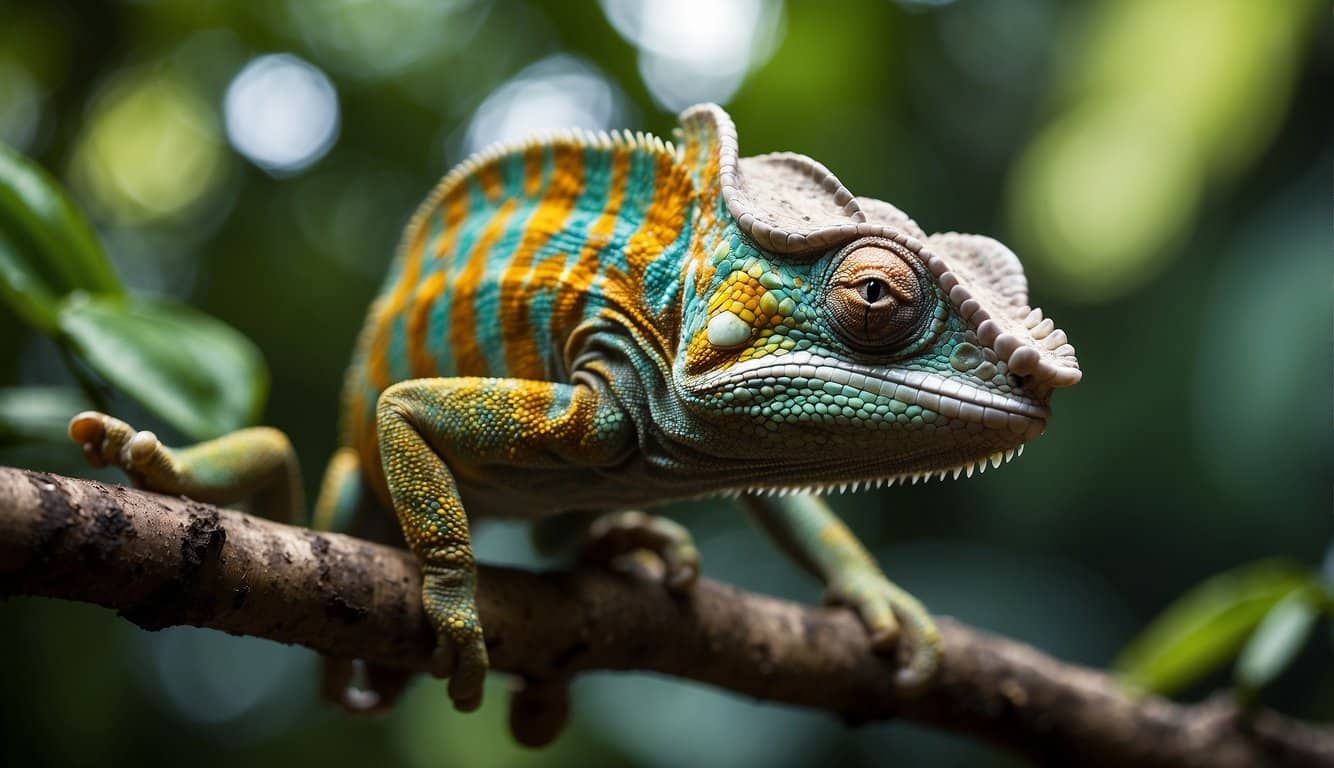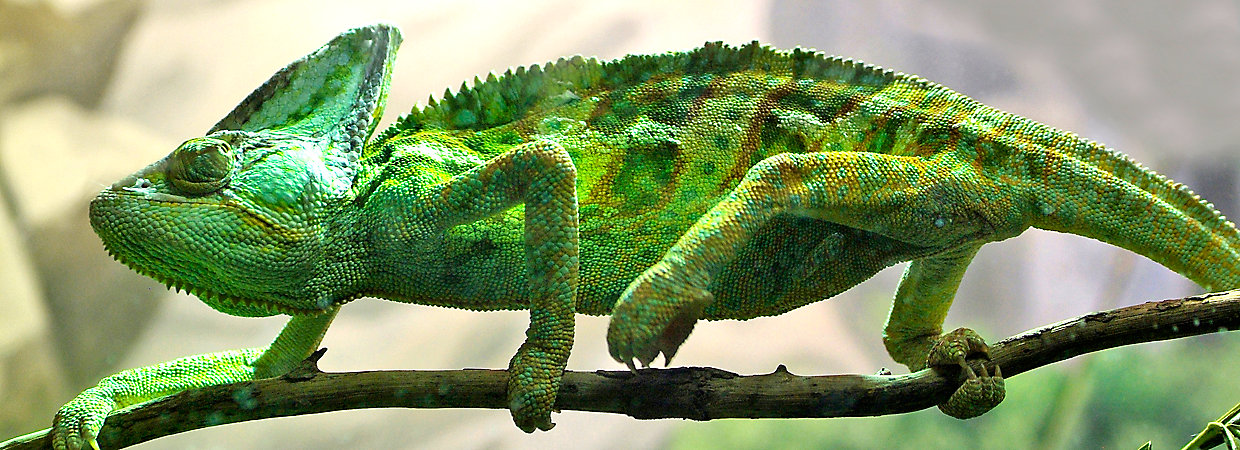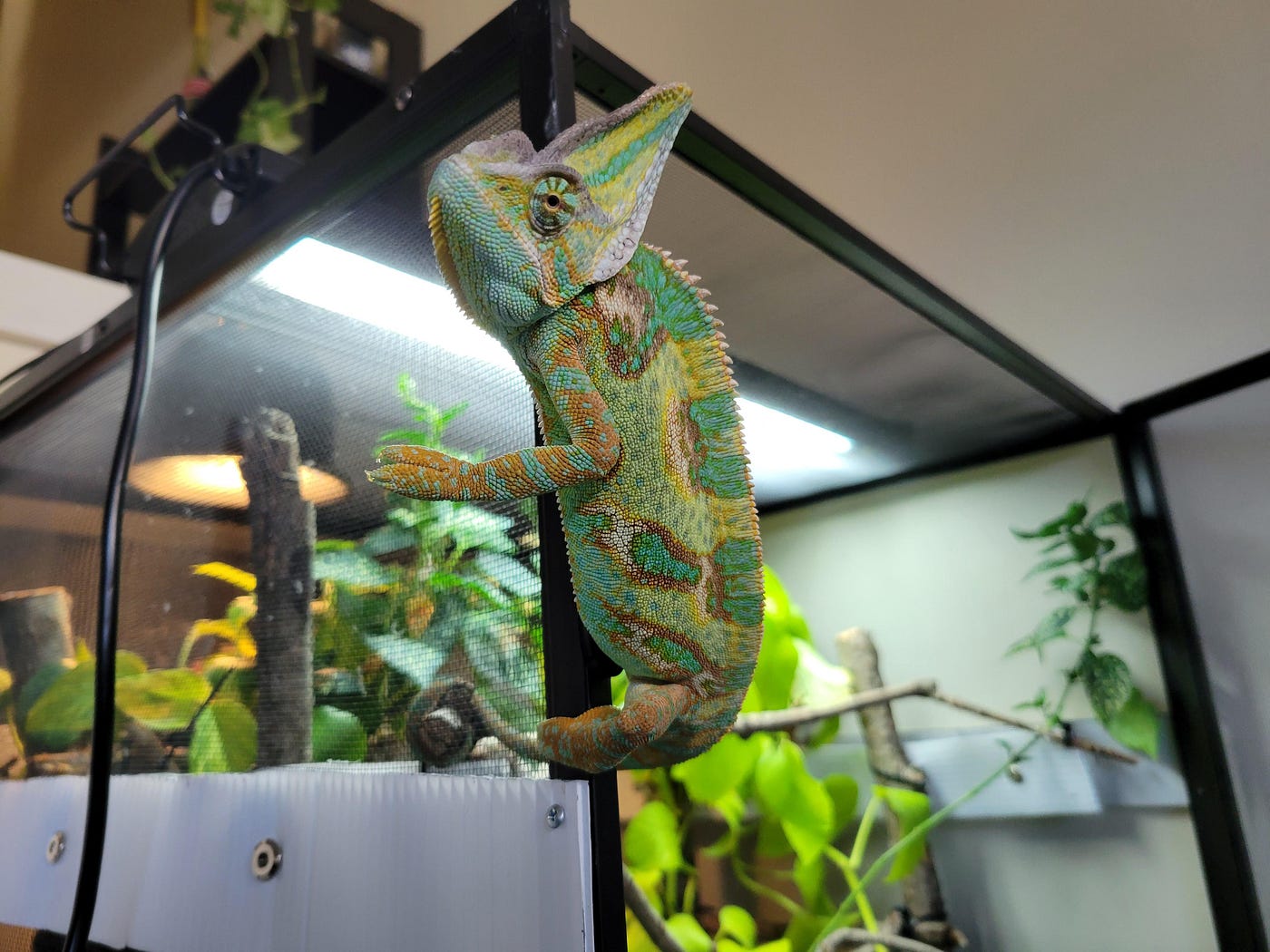Yes, chameleons do lose skin through a process called shedding. This occurs regularly as they grow.
Chameleons, remarkable and colorful lizards, are known for their ability to change their skin color, but shedding their skin is another aspect of their fascinating biology. As a necessary part of their growth, chameleons peel off their old skin in a process that can be quite intriguing to observe.
Owners and enthusiasts of these reptiles often notice periods when the chameleon’s skin becomes dull and lifts away, revealing a brighter layer beneath. Adequate humidity and environmental conditions are essential for a healthy shedding process. Understanding this natural occurrence can help keep a chameleon in good health and comfort, which is vital for anyone invested in reptile care. Shedding is a routine part of a chameleon’s life cycle and provides insight into their well-being.
The Natural Process Of Skin Shedding In Chameleons
The Natural Process of Skin Shedding in Chameleons intrigues reptile enthusiasts and casual observers alike. Just like snakes and other reptiles, chameleons shed their skin in response to growth and environmental factors. This shedding, or ecdysis, is a normal and vital part of a chameleon’s life cycle, allowing for growth and the removal of parasites and old, damaged skin.
Cycles Of Growth And Renewal
Chameleons experience regular growth spurts that necessitate skin shedding. These cycles vary depending on the chameleon’s age, species, and health. Younger chameleons, which are rapidly growing, may shed as often as every few weeks, while adults might only shed once every couple of months.
- Young Chameleons: Frequent shedding to accommodate rapid growth
- Adult Chameleons: Shed less often, indicative of slower growth rates
Why Regular Shedding Is Crucial
Shedding isn’t just about growth; it’s a health imperative for chameleons. The process of shedding old skin makes way for new, more elastic skin that can stretch with the chameleon’s body. This is particularly crucial for expanding as they grow.
| Shedding Advantages | Details |
|---|---|
| Growth Accommodation | New, stretchable skin replaces outgrown old skin. |
| Parasite Removal | Shedding helps remove parasites that cling to old skin. |
| Healing Enhancement | New skin aids in the recovery from minor injuries. |
Recognizing The Signs Of Shedding
Chameleons are fascinating creatures known for their ability to change colors spectacularly. But did you know that chameleons also go through a regular shedding process? This natural occurrence is vital for their growth and health. Understanding and identifying when a chameleon is about to shed its skin can help ensure they stay comfortable and healthy during the process.
Changes In Color And Texture
One of the most visible signs of an impending shed is a change in the chameleon’s skin color. The vibrant colors may become duller, and the skin might appear ashy or mottled. When shedding approaches, the skin’s texture can also change, looking looser and more wrinkled than usual.
Behavioral Cues Prior To Shedding
Along with physical changes, chameleons exhibit certain behavioral cues before they shed. These may include increased rubbing against objects, reduced eating, and possibly showing signs of restlessness or irritation. Noticing these behaviors in tandem with changes in skin color and texture can confirm that a chameleon’s shed is imminent.
Factors Influencing Shedding Frequency
Just like snakes and many other reptiles, chameleons regularly shed their skin. The frequency of this process relies on various factors. Knowing what influences this fascinating aspect of chameleon care ensures your pet remains happy and healthy.
Age And Growth Rates
Young chameleons shed more often than adults. This is due to their rapid growth. As a chameleon grows, its skin becomes too tight. Thus, it needs to shed and make way for a larger size. Here’s what you should expect:
- Baby chameleons: May shed once every 3 to 4 weeks.
- Juvenile chameleons: Shedding can occur once a month.
- Adult chameleons: They have slower shedding frequencies, potentially every couple of months or longer.
Environmental Conditions
Shedding also depends on the chameleon’s habitat. Both humidity and temperature play crucial roles. Ideal environmental conditions facilitate regular shedding. Consider the table below:
| Condition | Effect on Shedding |
|---|---|
| High Humidity | Supports smooth shedding. |
| Low Humidity | May cause incomplete sheds. |
| Optimal Temperature | Ensures efficient metabolism, aiding skin renewal. |
| Suboptimal Temperature | Can lead to shedding issues or health concerns. |
Creating a stable and suitable environment is key. A well-maintained habitat with the correct balance of humidity and heat promotes regular, healthy shedding in chameleons.
Proper Habitat Conditions For Optimal Shedding
Chameleons shed their skin. It’s a natural process for growth. The right habitat conditions make shedding easier. Providing these conditions is essential. Let’s explore the details for a stress-free shedding experience for your chameleon.
Temperature And Humidity Levels
Temperature and humidity affect shedding. Chameleons need both to be just right. Here is what to aim for:
- The basking area should be warm, around 85-95°F.
- The cooler end of the enclosure should be near 75°F.
- Humidity levels should stay between 50%-70%.
Use a thermometer and hygrometer. This ensures the environment is perfect. Stabilize temperature and humidity. It helps in easy shedding.
Enclosure Maintenance And Cleanliness
Cleanliness is crucial. A clean cage prevents skin infections. Here are some cleaning tips:
- Remove uneaten food and waste daily.
- Clean the water and food dishes regularly.
- Wash the enclosure thoroughly every month.
Use reptile-safe disinfectants. Keep the enclosure for your chameleon clean. This promotes healthy shedding.
How To Support Your Chameleon During Shedding
Shedding is a natural part of a chameleon’s life cycle. Your little tree-dweller needs extra care during this time. Keeping your chameleon healthy and stress-free during shedding is critical. Proper diet and gentle handling can make a big difference.
Diet And Nutrition Considerations
What your chameleon eats affects how well it can shed.
- Increased hydration helps skin loosen up.
- Offer foods that are rich in vitamins A and E, which promote skin health.
- Lack of certain nutrients could complicate shedding, so consider supplements if needed.
Safe Handling And Minimizing Stress
Shedding can make chameleons feel vulnerable.
- Hold your chameleon only when necessary during shedding periods.
- Be gentle when you do need to handle them.
- Keep their environment calm and quiet to reduce shedding stresses.
Addressing Shedding Complications
Chameleons are fascinating creatures, renowned for their remarkable ability to change colors. Like snakes and other reptiles, chameleons periodically shed their skin. This process, known as ecdysis, is critical for their growth and health.
Typically, chameleons experience smooth shedding, but sometimes complications can occur. Problems during shedding, or dysecdysis, can be indicative of underlying health issues. The following detailed sections aim to guide chameleon owners through identifying and treating shedding complications and understanding when to seek professional veterinary care.
Identifying And Treating Dysecdysis
Identifying shedding complications is crucial for your chameleon’s well-being. Watch out for skin that does not shed completely, especially around the toes, tail, and head. These retained skin patches can lead to restricted blood flow and infections.
- Increased humidity: Provide a humid environment for your chameleon as it aids in skin removal.
- Bathing: Gently bathe your chameleon in lukewarm water to soften the retained skin.
- Appropriate foliage: Ensure your chameleon has access to rough surfaces to rub against and facilitate the shedding process.
Treat signs of dysecdysis promptly with these steps to prevent any shedding-related health issues.
When To Consult A Veterinarian
Consult a veterinarian if your chameleon shows signs of distress or if shedding problems persist. Seek immediate professional care for the following:
- Persistent shed skin: Skin that remains for extended periods requires medical attention.
- Behavioral changes: Loss of appetite, lethargy, or aggression can signify discomfort.
- Visible discomfort: Difficulty in movement or excessive rubbing against objects may indicate that shedding issues are affecting your chameleon’s quality of life.
An experienced vet can assess the situation, provide a diagnosis, and recommend a course of action to address shedding complications. Early intervention can prevent more severe health problems in your chameleon.
Frequently Asked Questions On Do Chameleons Lose Skin?
Do Chameleons Shed Their Skin?
Yes, chameleons shed their skin periodically to facilitate growth and remove parasites. This process is known as molting and is common among reptiles.
What Do Chameleons Look Like When They Shed?
Chameleons appear patchy and flaky during shedding, revealing duller old skin alongside brighter new skin. The process resembles peeling.
What Do Chameleons Do With Their Skin?
Chameleons change their skin color for camouflage, communication, and temperature regulation. This adaptation aids in survival and social interactions.
Why Is My Chameleon Not Shedding?
A chameleon might not shed due to improper humidity levels, inadequate nutrition, or health issues. Ensure the habitat has correct humidity and the diet is nutritious. Consult a vet for persistent problems.
Conclusion
In summarizing, chameleons do shed their skin periodically, much like other reptiles. This natural process is essential for their growth and overall health. If you notice irregular shedding, it might be a sign to check their habitat or diet. Remember, a healthy chameleon will showcase regular, hassle-free skin shedding.
For chameleon owners and enthusiasts, keeping an eye on this fascinating aspect can be both intriguing and enlightening.


